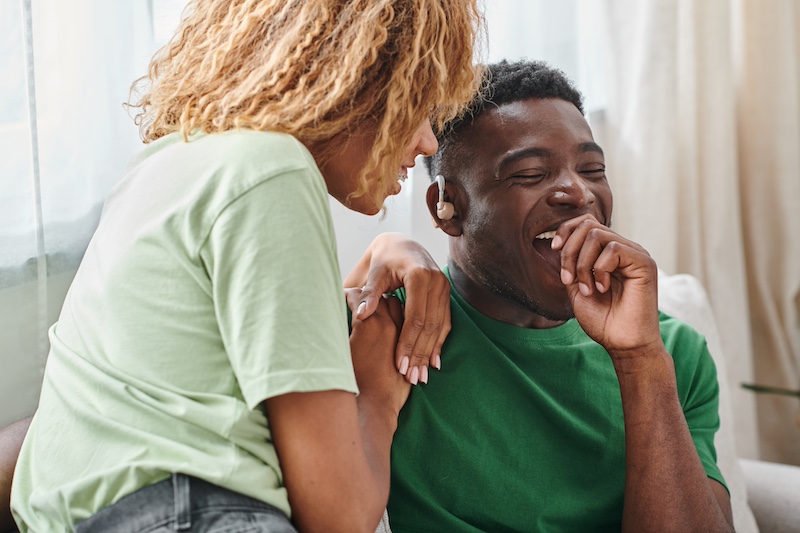All healthy relationships have a little bit of hearing loss
From Caesar’s Roman empire to Grandma June and Grandpa Frank’s semicentennial run, all structures that stand the test of time were built on selective hearing, making healthy relationships with hearing loss as common as they are without.

After experiencing a breakup with your hearing, finding that connection with loved ones again can be challenging. The good news is that a quiet environment, independent time, and regular check-ins will do more for your relationships than compromise or clear communication ever could. That being said, too much of a good thing is never a good thing, and whether it’s with family, friends, coworkers, or significant others, communication is still key to sustaining strong connections.
Recognizing the importance of maintaining strong connections for not just our external relationships, but also our mental coordinations, we’ve compiled a series of tips to help you navigate these challenges and maintain meaningful relationships.
Bring it in for hearing loss and educate loved ones
When diagnosed with hearing loss, one of the first steps is acknowledging it and being open about your condition. Communicate your needs to loved ones, explaining how your hearing loss affects you and what they can do to support you. By educating them about your situation, you create a foundation for understanding and empathy.
Practice makes perfect active listening skills
Active listening is crucial for maintaining healthy relationships with hearing loss as these practices enhance communication and reduce misunderstandings. For those with hearing loss, this involves focusing on the speaker, reading nonverbal cues, and asking for clarification when needed. Encourage your loved ones to maintain eye contact, speak clearly, and use gestures or written notes if it helps.
Connect to technology first to bridge communication gaps
Technology can be a valuable tool for those building relationships with hearing loss. Hearing aids, cochlear implants, and assistive listening devices can improve auditory perception. Additionally, smartphone apps that transcribe spoken words or amplify sound can be helpful as well.
Share information about these technologies with your loved, ones and encourage them to use the devices when necessary to enhance communication.
Amplify your communication preferences
Everyone with hearing loss has unique communication preferences. Some might rely on hearing aids, while others prefer lip-reading or sign language. Discuss your preferred methods of communication with your loved ones, and let them know if you need visual cues, background noise reduction, or specific seating arrangements in social settings.
By establishing your communication preferences, you set the foundation for a supportive environment where everyone can feel comfortable communicating their needs.
Bid for a connection through professional support
If hearing loss continues to impact your relationships significantly, consider seeking professional support from hearing instrument practitioners, audiologists or therapists specializing in hearing loss. These experts can provide personalized communication strategies and guide you and your loved ones through the challenges of hearing loss. Additionally, support groups for those with hearing loss can offer valuable insights and a sense of community.
Gain healthy relationships with hearing loss
When one door closes, another one opens – much like how turning down your hearing aids has a way of opening your heart to all the reasons why these strategies are so worthwhile.
All jokes aside, hearing loss doesn’t have to hinder relationships. By practicing effective communication techniques and fostering empathy, maintaining healthy and fulfilling connections with loved ones is not only doable but essential. Remember, the key is patience, understanding, and a commitment to staying connected through every step of the way.
If the tether ever feels too filled with static to make a clear connection, throw us a rope, and we’ll make up the difference in distance with resources and tangible contacts whenever and wherever you need it.
AHIP is not and shall not be liable for any of the views expressed by the authors or advertisers on the Signal Blogs. The authors’ opinions and the advertisers’ content do not necessarily reflect AHIP’s views.



